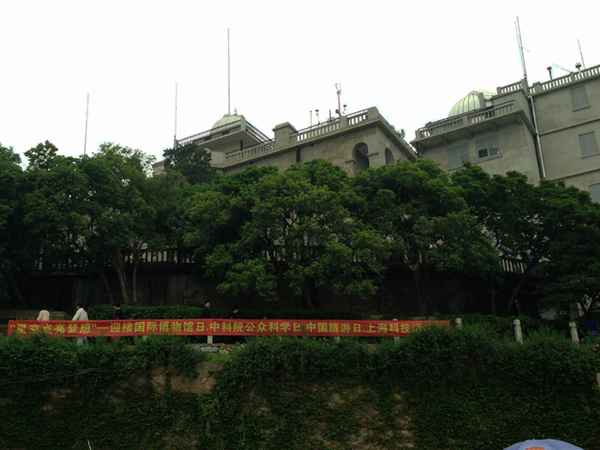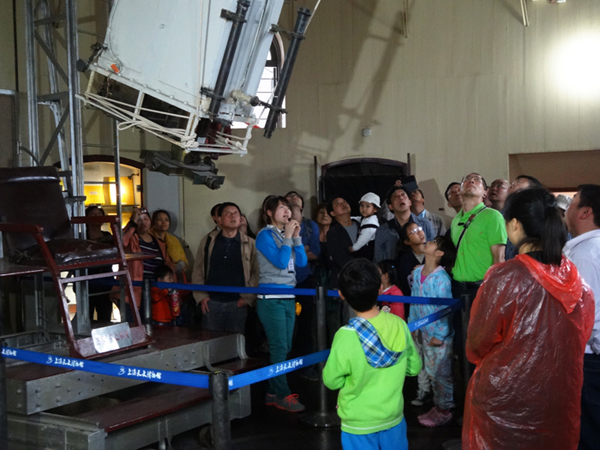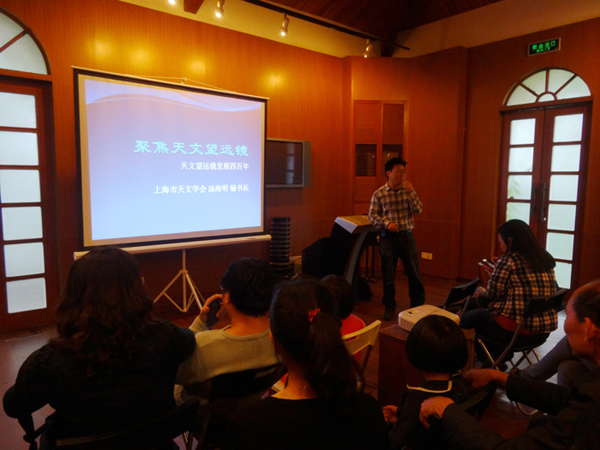Shanghai Astronomical Museum offered free entrance to the public between May 17 to 19, with a series of "Star lights dream" themed activities.
On the afternoons of May 17 and 18, the Museum held two astronomical science popularization lectures for the public in the science popularization meeting room. Tang Haiming, who is the secretary general of the Shanghai Astronomical Society, and director of the science popularization department of Shanghai Astronomical Museum, delivered lectures on "focusing telescopes".
During the lectures, Tang briefed attendees about the museum's greatest treasure and China's first large-scale astronomical telescope – a binocular refracting astronomical telescope with a diameter of 40 centimeters and a focal length of 7 meters. He gave witty anecdotes about the telescope since it was made 400 years ago, in a bid to enrich the audiences' knowledge of the museum's treasures and inspire their interest in astronomical science.
Owing to rainy weather at the weekend, the astronomical telescope observation event had to be canceled, but the audiences' enthusiasm remained high. Within two days, nearly 10,000 visitors had climbed to the top of Sheshan Mountain to have close contact with Sheshan Observatory.
Volunteers from Shanghai International Studies University provided volunteering services in spite of the rainy weather. In the past three years, over 100 science popularization volunteers have looked after more than 100,000 visitors and have won broad acclaim.
May 18 marked International Museum Day with this year's theme of "collections build up a communication bridge". International Museum Day is a celebration held every year on or around May 18, coordinated by the International Council of Museums (ICOM), to further enhance people's sense of responsibility to protect their cultural heritage. China joined the council in 1983.
Shanghai Astronomical Museum has been committed to building a communication bridge between scientists and the public, through plentiful organizing science popularization activities. This time, they also used Weibo and Wechat platforms to invite the public to participate.
Sheshan Observatory on the top of West Sheshan Mountain is one of the oldest astronomical observatories in China. The silver hemispherical building stands in contrast to the Marian Basilica. It was built in the 25th year of Emperor Guangxu's reign in the Qing Dynasty (1899).
Sheshan Observatory is one of the top five astronomical research centers in China. It is also China's only joint monitoring institution participating in international earth rotation and earth satellite tracking by applying high astronomical technologies. Since the founding of the People's Republic of China, it has made more than 30 domestic and international achievements in astronomical science and technology. It is a wonder that a scientific building and a religious building in different styles and for different purposes are on top of the very same mountain.
 |
| Shanghai Astronomical Museum |
 |
| The museum's greatest treasure |
 |
| Science popularization lecture |


